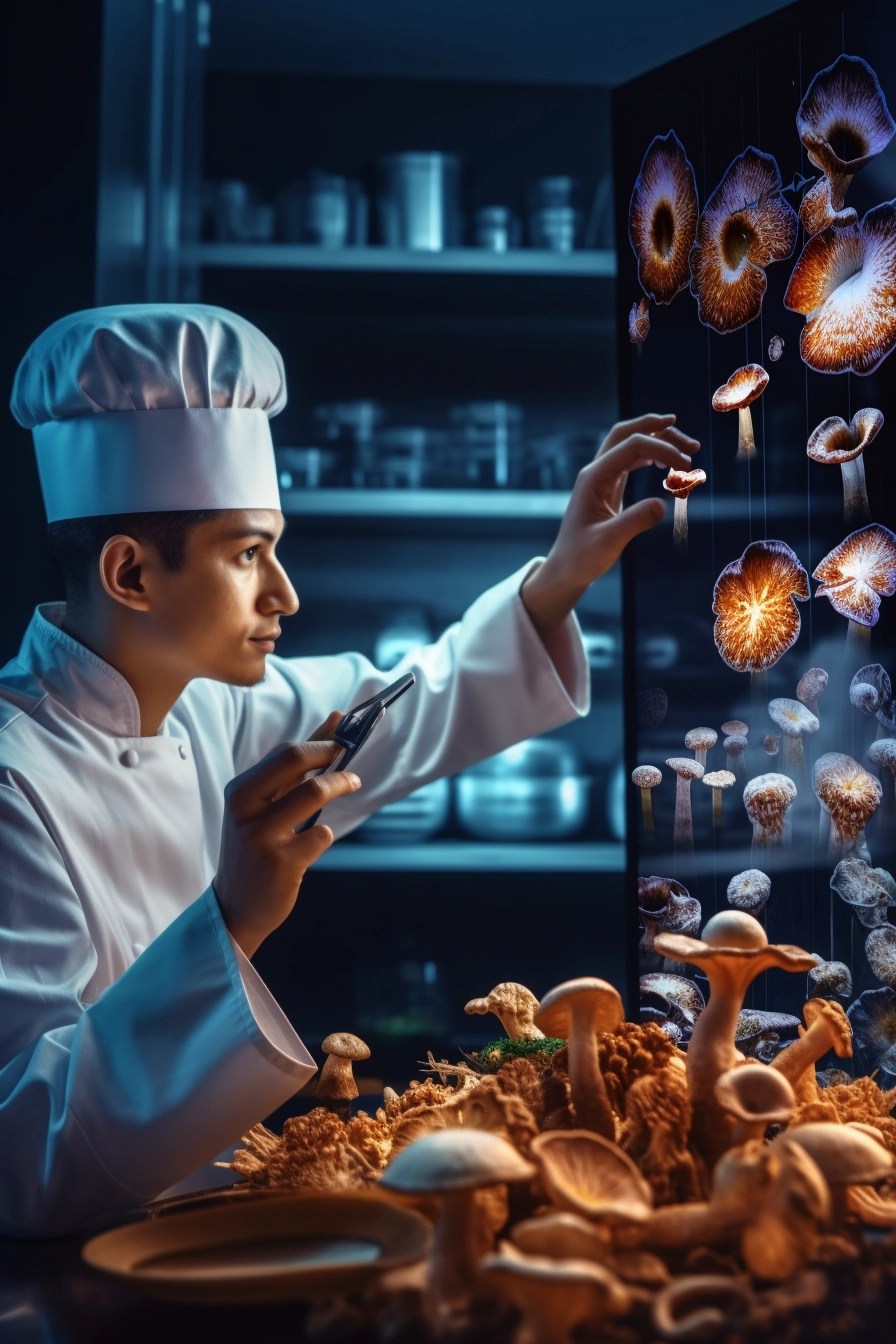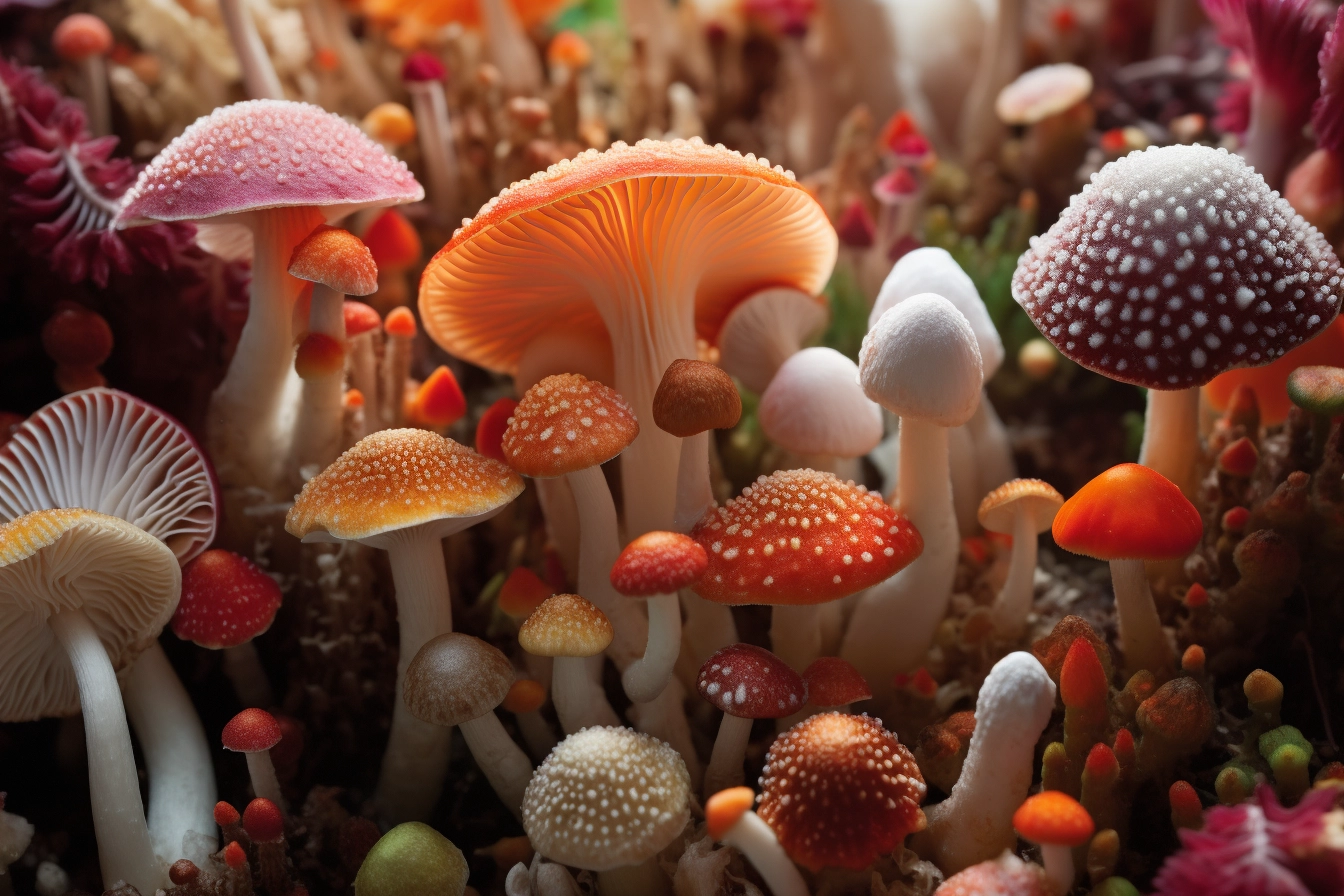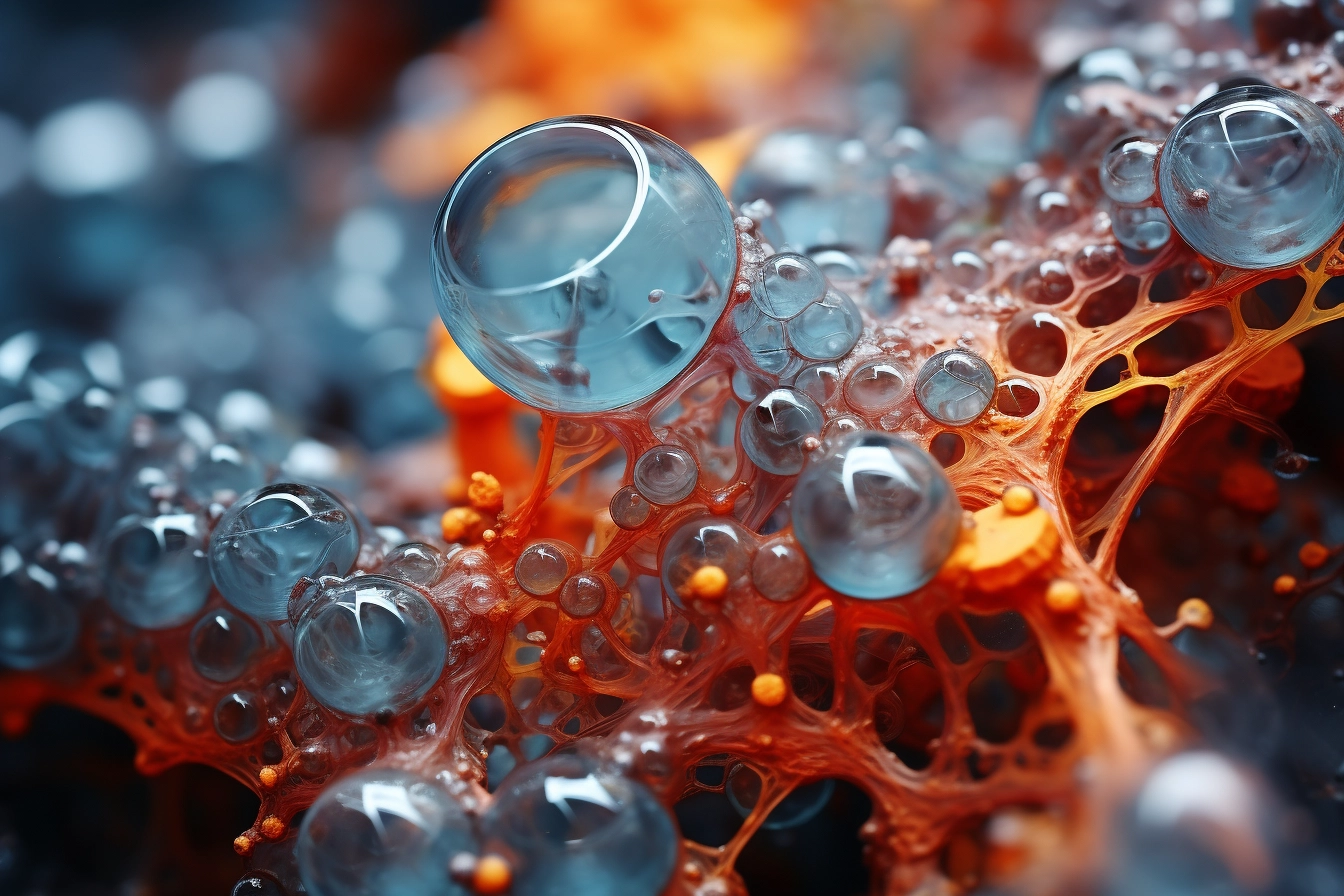published May 10th, 2023 | 7 min read
Mushrooms have been a part of the human diet for centuries, but only recently has artificial intelligence (AI) begun to revolutionize our understanding and appreciation of their flavor. By exploring the discovery and history of mushrooms, examining the health benefits they provide, and delving into their unique chemical makeup, AI is helping us unlock a whole new world of delicious possibilities. From farmers to chefs, AI is transforming the mushroom industry and allowing us to experience mushrooms in unprecedented ways. In this article, we’ll explore how AI is altering our perception of the science behind mushroom taste. The reader should be amazed by the AI power of discovery, futuristic style!

Microscopic view of a mushroom spore
The Discovery and History of Mushrooms
Mushrooms have a rich and ancient history, with evidence of their cultivation dating back 12,000 years ago in China. For centuries, mushrooms have also been used for medicinal and spiritual purposes. But it wasn’t until 1729 that Italian botanist Pier Antonio Micheli conducted the first scientific study of mushrooms – unlocking some of the secrets behind their mysterious nature.
In the early 19th century, scientists made significant breakthroughs regarding the understanding of mushroom “spores” and their ability to reproduce. This discovery allowed for more efficient production methods which ultimately resulted in mushrooms becoming widely cultivated around the world. Today, you can find them grown in many countries including North America (the United States and Canada).




A mushroom spore, enhanced by advanced imaging technology
AI is revolutionizing the way we understand and appreciate mushrooms by using algorithms to analyze data from chemical compounds found within different varieties of mushrooms. By unlocking this information – chefs can create unique dishes, develop new flavors, optimize mushroom harvesting and cultivation processes, as well as maximize yields while minimizing waste. AI has allowed us to discover a world of possibilities when it comes to enjoying delicious fungi!
What is the taste of mushrooms
The taste of mushrooms can vary depending on the type of mushroom, but generally, they have a savory, earthy flavor. Some mushrooms, such as shiitake and portobello, have a meaty flavor that can be described as umami, while others like chanterelles have a more delicate, fruity flavor. Additionally, some mushrooms, like the morel, have a nutty flavor, while others, like the truffle, have a strong, pungent flavor. The taste of mushrooms can also be affected by how they are prepared, as they tend to absorb flavors from other ingredients in a dish. Overall, the taste of mushrooms is complex and unique, making them a popular ingredient in a variety of cuisines around the world.




Fine dining dish featuring mushrooms as the main ingredient
How AI Impacts the Science of Mushrooms Taste
AI is revolutionizing the way we understand and appreciate the mushroom taste. By analyzing the chemical makeup of different mushroom varieties, AI can uncover flavor profiles that would have been impossible to detect with traditional techniques. This allows chefs to create dishes with exciting new flavors and textures, as well as optimize harvesting and cultivation processes for farmers.
Using AI algorithms, scientists can measure and compare the flavor profiles of different species of mushrooms, helping identify which varieties are most enjoyable to eat. AI can also be used to determine the optimal amount of time for cooking mushrooms to get the best flavor profile from each variety. In addition, AI can be used to predict the future tastes, smells, or textures of new types of mushrooms that could be developed in the future.




A scientist analyzing different types of mushrooms
The potential applications for artificial intelligence in mushroom science are limitless. For example, AI could be used to develop new recipes that incorporate different types of mushrooms into dishes for unique flavor combinations. Additionally, AI could be used by restaurants to analyze customer feedback on their menu items to better understand which dishes people are enjoying most. The insight gained from this data could then be used by restaurants to customize menus and ensure they’re offering customers the most delicious dishes possible.
Overall, AI’s newfound ability to unlock the secrets behind mushroom flavor has opened up a world of delicious possibilities for chefs around the world. With its power of discovery and analysis, AI is transforming not just how we understand taste but also how we cultivate our food sources – bringing us one step closer to a healthier planet!




a chef using AI technology to analyze the chemical composition of mushrooms
The Health Benefits of Eating Mushrooms
Mushrooms have long been seen as a nutritious food source, but the health benefits of eating mushrooms are only now being uncovered. From their antioxidant content, which can reduce inflammation and cell damage, to their high fiber content, which can aid digestion, mushrooms are a powerhouse of nutrition. Low in calories and packed with vitamins and minerals, mushrooms are also a great source of gut-healthy bacteria that can help promote overall health.
Recent studies have even suggested that certain compounds found in mushrooms may be able to protect against cancer. These compounds, known as terpenoids, have been shown to have anticancer properties in animals and could potentially be used to develop new cancer treatments. Additionally, some species of mushrooms contain beta-glucans, which may help stimulate the immune system and fight off infections.
Incorporating mushrooms into your diet is an excellent way to ensure you’re getting all the vitamins and minerals your body needs without having to rely on heavily processed foods or take supplements. Mushrooms are low in calories yet still provide a wide range of nutrients including vitamin B12, selenium, and potassium – all essential for maintaining good health. Eating mushrooms regularly has also been linked with improved cardiovascular health due to their high levels of antioxidants.




Chef using mushrooms in a fine dining restaurant
Not only are mushrooms beneficial for our health, but they are also incredibly versatile when it comes to cooking; they can be grilled, roasted, boiled, or eaten raw depending on your preference. Whether you choose to stir-fry them or roast them as part of a main course or blend them into soups or stews; adding mushrooms into your diet is sure to provide a tasty addition while giving you essential vitamins and minerals that will keep you healthy.
In short, there is much to be gained from including mushrooms in one’s diet – not least because they provide delicious flavors that make any dish more interesting! With AI unlocking the secrets behind mushroom flavor profiles there is no limit when it comes to what chefs around the world can create with this amazing ingredient – giving us all something exciting and delectable to discover!




advanced sensors and robotics, capable of precisely preparing and cooking mushrooms
The Different Components of Mushroom Flavor
Mushrooms are a multi-dimensional and complex food source, with hundreds of volatile compounds, minerals, and other components that make up their flavor. AI is now allowing us to unlock the secrets behind each mushroom’s flavor profile.
To start with, let’s look at the volatile compounds in mushrooms. These compounds create the scent and aroma of mushrooms, as well as contribute to their unique taste. Alcohols give mushrooms a fruity smell while esters provide a flowery smell. Aldehydes provide an earthy aroma while ketones give a spicy scent. All these aromas combine to form the pleasant smell of a mushroom dish.
Another component that contributes to mushroom flavor is the umami taste due to its high glutamate content. Glutamate is an amino acid known for its savory flavor and is found in many types of food including meat, dairy products, vegetables, and soy sauce. Mushrooms contain higher amounts of glutamate than other vegetables, making them especially flavorful and rich tasting when cooked properly.




Scientist studying the taste and smell of mushrooms
The woody or earthy flavors in mushrooms are caused by lignin and cellulose molecules which can be broken down by cooking or fermentation processes into smaller aromatic compounds such as vanillin or furfural respectively. Finally, sulfur-containing compounds such as dimethyl sulfide (DMS) give mushrooms their pungent flavor, which can be quite strong in some varieties but mild in others depending on how much DMS they contain.
By understanding these components that make up the flavor profile of different varieties of mushrooms it allows us to appreciate them more deeply for their complexity and deliciousness – something AI has made possible!
Summary of How AI Impacts the Science of Mushroom Taste
AI is revolutionizing the science of mushroom taste, allowing us to gain a deeper understanding of their flavor profiles and unlocking new possibilities for chefs and producers around the world. AI algorithms can accurately detect and process flavor compounds in mushrooms with unprecedented accuracy, enabling chefs to create delicious recipes with ease. AI-powered systems can rapidly analyze data and predict flavor trends, giving mushroom cultivators a better understanding of the complexities of mushroom flavor profiles.
In addition to unlocking flavor data, AI technology is also being used to improve the efficiency of cultivation processes. By leveraging machine learning capabilities, farmers can optimize their harvesting methods to maximize yields while minimizing waste. AI algorithms can also help identify optimal growing conditions for different species of mushrooms and allow for more precise control over the environment in which they are grown.




The advanced farming robot used for harvesting truffles
Finally, AI is revolutionizing our ability to study mushrooms’ health benefits. By analyzing complex chemical compounds found within them, AI has enabled researchers to uncover potential medicinal properties contained within mushrooms that may be beneficial in treating certain diseases or illnesses.
The power of artificial intelligence is transforming the way we understand and appreciate the science of mushroom taste, opening up a world of delicious possibilities for chefs around the world while simultaneously improving our ability to cultivate healthy food sources.









